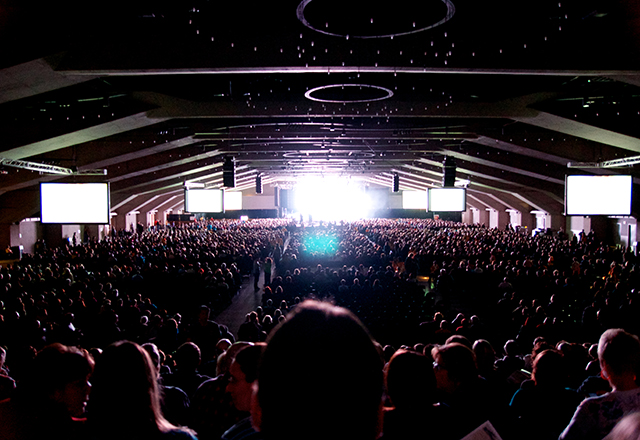No one can deny that the lion’s share of scientific discourse is carried out within the pages of academic journals, buoyed by jargon and supported by multicolored, miniscule figures. But the more casual, freewheeling banter about still-preliminary data points, and how they may suggest some interesting direction, belongs in the realm of the scientific conferences. These conferences provide opportunities for doctors, researchers, patients and companies alike to contribute their unique vantages in the pursuit of understanding, not tied down by the formality of written and published work but instead via conversations over posters, coffee, or beer amid the hubbub of a local bar.
Unsurprisingly, no small amount of digital ink has been spilled preparing attendees for these events, including from this very blog. Other Biomedical Odyssey contributors have explained how to prepare for an academic conference, as well as how to network with other attendees and even what to do when your conference occurs overseas. Some of these skills are widely transferable among all conferences, but not every conference is the same, and therefore not every tip applies universally. Some meetings are small and tend to be intimate and specific. There, most attendees will not only be familiar with the presenters, but likely also will have a deep understanding of the material. For example, my lab’s favorite conference is the Neurobiology of Drosophila meeting at the Cold Spring Harbor Laboratory, where presenters are told to prepare for a 365-person audience. But other meetings are large. Very, very large. These are the meetings I am writing about today. These are the meetings that bring together entire disciplines of study, and all of the doctors, faculty members, students and corporate representatives who can possibly be united under one very large roof.
This year I attended the Society for Neuroscience annual meeting in San Diego. The final count for daily attendees just barely missed 29,000, while the meeting of the American Chemical Society passed 14,000 attendees, and the number for the American Society of Human Genetics meeting was 7,500. These massive conferences are more akin to pop-up scientific cities than any single-room-type meeting, and they come with unique sets of challenges and opportunities. The following are just a few of my big conference do’s and don’ts — but remember, of course, that this is only one voice in a sea of almost 30,000.
Do access the abstract book ahead of time. There are thousands of poster presentations, talks and presentations, and the only way to know which ones interest you (as well as their time and location) is to scroll through the abstract book and circle the ones that tickle your fancy.
Don’t try to go to every single poster/talk/presentation that catches your eye. I know this is much easier said than done. I was interested in every third abstract at a recent conference, but after literally jogging several miles between rooms in the gargantuan conference center on day one, I had to let pragmatism take over and whittle down my list to those I most wanted to see.
(This neatly dovetails with another do: wear comfy shoes. Those conference centers are big.)
Do spend some time at the exhibitor stations, which are booths set up by biotech companies, journals, universities, etc. Yes, they are the premier locations for T-shirt collecting, but they also make many of the tools you use in your daily lab life, and their expertise is almost always beneficial. Just by walking by the Stoelting table this year, I realized I had been using their nano-injector incorrectly. Whoops. And a short conversation with a sales rep fixed a multimonth issue with my experiments.
Don’t spend all your PI’s money. The exhibitors bring their coolest, fanciest gadgets to the big shows, and they know just how to convince you that their new mouse phenotyping rig will save you countless hours and supply vital data for your project. Before committing to anything, ask to set up a demo and start an email conversation — sometimes new, flashy and expensive isn’t as great as a piece of equipment that’s tried-and-true.
Do attend presentations outside your specific focus. This is one of the great advantages of big conferences: You get to explore an amazingly wide array of research rarely encountered in the daily lab life. These interactions are invaluable — they can jog your brain, or lead to a new idea or approach you hadn’t considered. And, ultimately, science is not some esoteric pursuit. The goal for all of our research is to interact and intersect, to drive forward our understanding of life and the natural world.
Don’t spend more time in the locale than at the conference. Touring around when you have time is great, but it is considered a faux pas to attend a national meeting in San Diego and return to work with no new information but have a well-established suntan and a stack of receipts for the PI.
These huge conferences are undoubtedly overwhelming, and they are taxing in time, travel and energy. But despite sleeping for two straight days after returning to Baltimore, the opportunity to interact with the larger world of neuroscience will have both short- and long-term positive impacts on my science, and my role in the scientific community. I wish for you all to experience the same.
